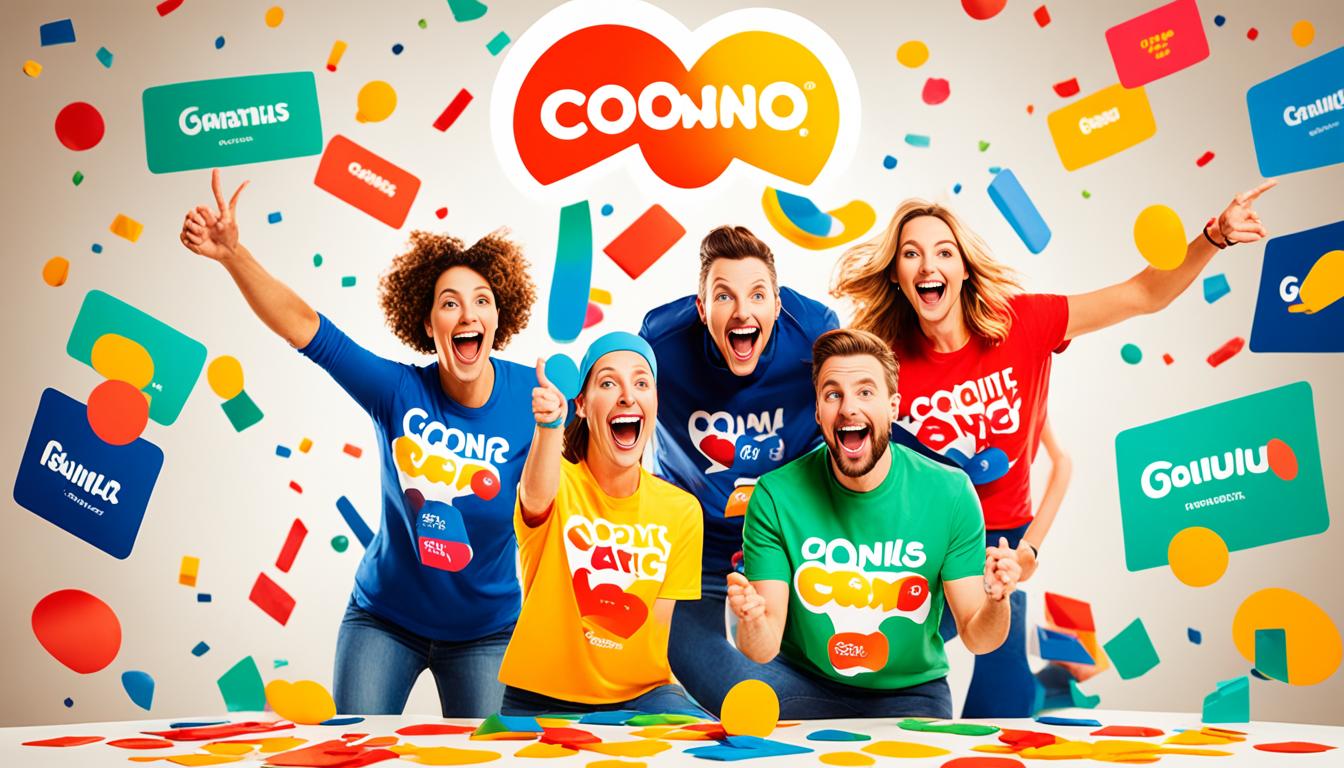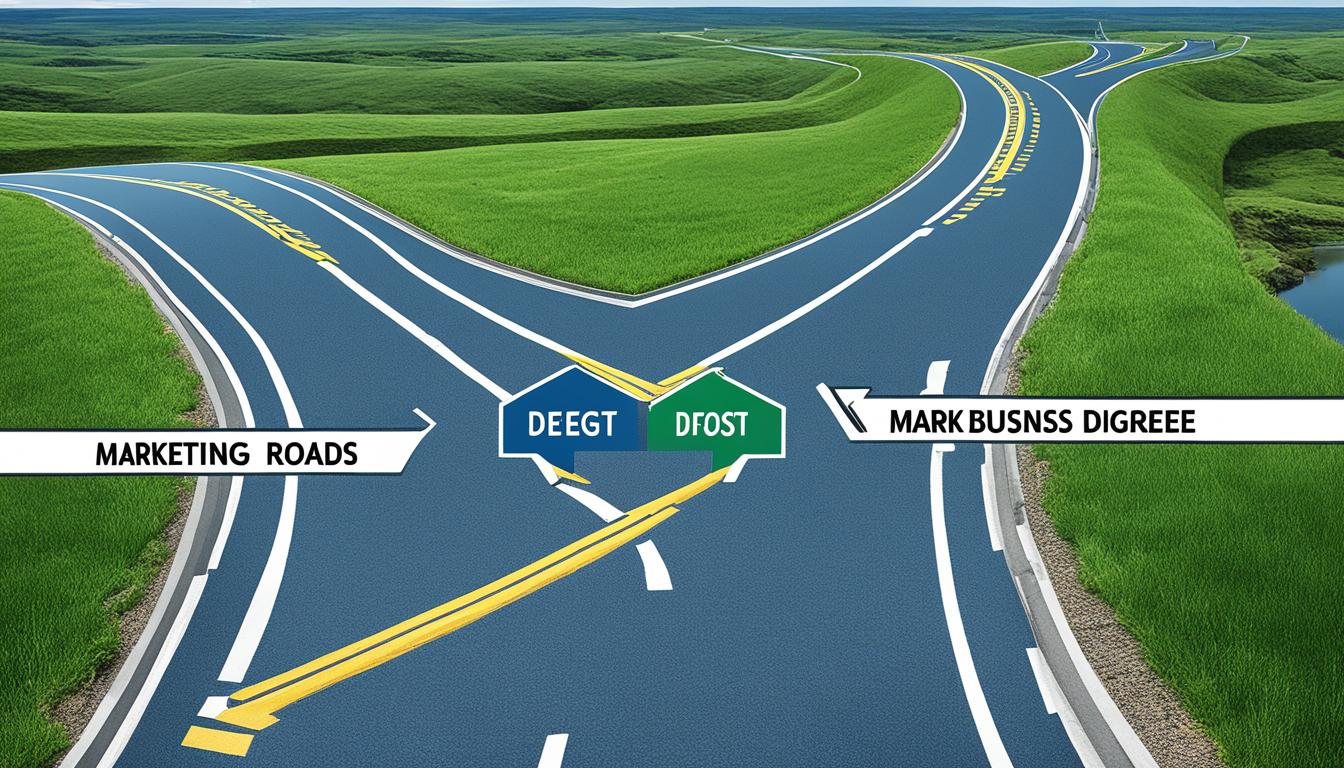Welcome to our guide on inbound content marketing! In today’s world, having a strong content strategy is key for success. We will dive into inbound content marketing, its benefits, and show you examples. This will make you see how it truly works.
Key Takeaways:
- Inbound content marketing is a powerful digital marketing strategy that focuses on attracting and engaging high-quality leads.
- By creating valuable and optimized content, businesses can drive lead generation, customer engagement, and brand awareness.
- Examples of inbound marketing tactics include blogging, infographics, whitepapers, ebooks, case studies, webinars, podcasts, video series, and SEO.
- Measuring success metrics and optimizing content distribution are vital aspects of an effective inbound content marketing strategy.
- Through thought leadership and content marketing, businesses can establish themselves as industry authorities and build trust with their audience.
What is Inbound Marketing?
Inbound marketing is a strategy focused on pulling prospects to your website. It uses valuable content and experiences. This method is different from direct ads for your products or services. It’s about connecting with possible customers, boosting your brand, and building trust.
This approach lets businesses introduce themselves and what they offer. It helps potential customers get to know the brand better. So, when they’re ready to buy, they might think of you first. This means creating great content, making it search-friendly, and using strategies to engage people at every step of their buying journey.
Unlike traditional methods, inbound marketing doesn’t interrupt people with ads. Instead, it’s about value and building relationships. It combines content creation, SEO, social media, and email marketing. Doing this attracts the right visitors and guides them towards making a purchase. Plus, companies can become leaders in their field by sharing helpful content.
Inbound marketing works well for businesses with complex offers or longer sales cycles. It tackles potential customers’ needs and challenges, helping build trust. This approach also lets businesses learn about their audience. With this knowledge, they can make their marketing even more personalized and effective.
Why Should I Use Inbound Marketing?
Inbound marketing is a strong tool that helps businesses with long sales cycles. It focuses on building trust with quality leads. By attracting prospects actually interested in what you offer, you increase the chances they pick you over others. Showing value and becoming a trusted source for information strengthens your market presence and boosts sales.
One big plus of inbound marketing is targeting quality leads. Instead of using broad outbound tactics, inbound strategy draws in those already keen on your business. These leads look up your industry, products, or services on their own. This shows they’re more engaged and ready to buy. Focusing on these leads makes your marketing more effective and improves your return on investment.
Building trust is central in inbound marketing. By sharing valuable content consistently, you prove your expertise. This makes your brand a go-to for reliable info. Gaining your audience’s trust helps in stand out in today’s competitive market. Trusted brands get more engagement, shares, and consideration from prospects when they’re ready to buy.
Inbound marketing also raises brand awareness. By posting high-quality content that answers your audience’s needs, you extend your reach. You’ll be seen as an industry leader. This visibility and credibility help potential customers recognize and remember your brand. It makes them more likely to choose you when it’s time to buy.
Showing your value is key in inbound marketing. With informative content, you highlight what your products or services do. You address the needs and wants of your target audience. This shows how you can solve their problems and enrich their lives. Demonstrating this value raises confidence in your brand and deepens the trust of your prospects.
To conclude, inbound marketing is a smart strategy for building trust with quality leads, boosting brand awareness, and showcasing your value. By using an inbound approach, your brand becomes a trusted name. This attracts prospects genuinely interested in what you offer. With this strategy, you can better manage the sales cycle and get great results for your business.
Examples of Inbound Marketing-Tactics
Inbound marketing uses different tactics to attract and interest potential customers. Here are some ways these tactics work:
Blogging
Blogging is well-liked in inbound marketing. Businesses create informative blog posts regularly. This helps answer customer questions and positions the business as a leader in their industry. It also boosts the brand’s visibility, brings more visitors to the site, and strengthens reader relationships.
Infographics
Infographics make complex info easy to grasp with attractive visuals. They grab the attention of people and spark interest in your brand and what you offer.
Whitepapers
Whitepapers are detailed reports on specific topics or challenges. They show off your knowledge, give deep analysis, and share useful insights and solutions. You can get leads by having people download whitepapers from your site.
Ebooks
Ebooks offer detailed information on particular topics and tend to be longer than blog posts. They delve deeply into subjects. People can get these ebooks by giving their contact info, which provides value to them.
Case Studies
Case studies demonstrate how your product or service has helped a customer succeed or solve a problem. They prove your value, increase trust, and show how you can meet specific needs. Case studies are very convincing to potential customers.
Webinars
Webinars are live presentations or workshops online. They let you talk directly with your audience. You can teach, engage, and convert leads by delivering great content and answering questions. Webinars are perfect for showing your expertise and connecting with your audience.
Podcasts
Podcasts are audio content you can listen to anywhere. They share valuable information, insights, and interviews with experts. Podcasts help you reach more people, showcase your knowledge, and boost your brand’s reputation among listeners.
Video Series
Video series include several related videos that discuss a topic or give step-by-step guides. Videos catch people’s attention and explain complicated ideas in an easy-to-understand way. They can be put on social media, landing pages, and used to get more leads.
Search Engine Optimization (SEO)
SEO is key for making your website more visible and bringing more visitors. By improving your site’s content, tags, and technical parts, your site can rank higher in search results. This attracts people looking for what you offer.
These examples show how inbound marketing can create real benefits for your business. Using a mix of these methods can help draw in, interest, and convert the people you want to reach.
| Tactic | Benefits |
|---|---|
| Blogging | – Improves brand visibility and organic traffic – Establishes thought leadership – Nurtures relationships with readers |
| Infographics | – Captures attention with visually engaging content – Generates interest in your brand – Simplifies complex information |
| Whitepapers | – Demonstrates thought leadership – Provides in-depth analysis and insights – Captures leads for further nurturing |
| Ebooks | – Offers comprehensive and actionable information – Serves as a lead magnet for capturing leads – Builds brand authority |
| Case Studies | – Showcases real-life success stories – Builds credibility and social proof – Addresses potential customers’ needs |
| Webinars | – Educates and engages in real-time – Establishes thought leadership – Builds relationships with the audience |
| Podcasts | – Delivers audio-based content on-the-go – Showcases expertise and industry insights – Increases brand awareness |
| Video Series | – Engages with visually appealing content – Communicates complex information effectively – Enhances brand visibility |
| Search Engine Optimization (SEO) | – Increases organic visibility – Drives targeted traffic to your website – Improves search engine rankings |
Importance of Inbound Marketing
Inbound marketing is vital for a business’s digital strategy. It boosts brand awareness, attracts the right leads, and connects authentically with audiences. Achieving lasting success and a strong online presence needs an effective inbound approach.
Boosting brand awareness is a key advantage. By sharing valuable, engaging content, businesses show their expertise. It helps potential customers get to know the brand and see it as a trusted leader.
Inbound marketing also draws in qualified leads. It targets specific audiences with strategic content, leading to an interest in the business’s products or services. This focused effort ensures resources aren’t wasted on uninterested leads.
Success metrics are crucial in inbound marketing. Tracking website traffic, conversion rates, and engagement gives insight into campaign success. These metrics help businesses tweak their strategies for better digital marketing outcomes.
The Role of Brand Awareness
Awareness is key to business success. Inbound marketing builds meaningful connections, making the brand more recognizable. Businesses use blogs, social media, and email to increase awareness and strengthen their industry presence.
Lead Generation and Conversion
Lead generation is essential in inbound marketing. Providing valuable content helps gather target audience information, turning them into leads. Email campaigns, lead magnets, and gated content boost leads and conversions.
Inbound marketing fosters strong relationships with the audience, increasing loyalty and advocacy. Centering strategies around the customer and providing value at every buying stage positions businesses as trusted advisors.
| Benefits of Inbound Marketing | Key Focus Areas |
|---|---|
| 1. Increased brand awareness | 1. Content creation and distribution |
| 2. Attracting qualified leads | 2. Lead generation and nurturing |
| 3. Establishing trust and credibility | 3. Thought leadership and content marketing |
| 4. Measuring success metrics | 4. Search engine optimization (SEO) |
Content Creation and Distribution
Creating and sharing content are key to a strong inbound marketing plan. By making high-quality, useful content, businesses can draw in and engage their audience. This boosts brand visibility and reach. Sharing content through blogs, social media, and emails helps increase its impact.
Good content is at the heart of successful inbound marketing. It should meet the needs and interests of your audience. This makes your brand a trusted source, building credibility. It also helps gain customer trust, which can lead to more sales and loyalty.
When making content, think about your marketing strategy. Research your audience’s likes and issues. This helps make content that solves their problems, presenting your brand as the solution.
Optimizing Content Distribution
After creating content, you need to share it well to reach your audience. Use different channels for the best visibility and interaction. Here are some strategies:
- Share and promote your content on social media. Talk with your followers to increase reach and visibility.
- Make your blog posts search-friendly. Use keywords and optimize meta tags.
- Send personalized emails to your subscribers. Make sure the content suits their needs.
- Write guest blog posts or work with influencers to find new audiences.
These strategies help spread your content further, attracting more people and engaging them better. Always check how your content is doing. This lets you fine-tune your approach for better results.
In the end, good content creation and sharing are vital for marketing success. By making and distributing content wisely, you can broaden your brand’s appeal. This leads to more engagement, conversions, and growth for your business.
Lead Generation and Nurturing
Lead generation and nurturing are key for a strong inbound marketing strategy. They help get info on potential customers and guide leads with content meant just for them. This lets businesses connect with their audience better. Now, let’s look into ways to generate and nurture leads.
Capturing Leads with Landing Pages
Landing pages play a big role in capturing leads. They’re made with a goal, like getting email addresses, promoting a product, or giving away resources. With well-made landing pages that offer value, businesses can start a relationship with potential customers.
Nurturing Leads through Email Campaigns
After getting leads, it’s crucial to keep them interested with email campaigns. Using personalized content helps keep leads engaged. Businesses can tailor emails to fit leads’ interests and needs. These emails might have newsletters, product news, special deals, and blog posts. This way, leads can become loyal customers.
Delivering Personalized Content
For effective lead nurturing, providing personalized content is essential. Understanding what your audience needs allows you to create content just for them. By using data and analytics, you can make your content relevant and helpful. This builds trust and makes your business a go-to resource in your field.
| Lead Generation Strategies | Lead Nurturing Tactics |
|---|---|
| Capturing leads through landing pages | Implementing targeted email campaigns |
| Offering valuable resources in exchange for contact information | Segmenting leads based on interests and behaviors |
| Utilizing social media for lead generation | Delivering personalized content based on customer data |
| Running contests or giveaways to attract leads | Providing exclusive offers and discounts to nurture leads |
Thought Leadership and Content Marketing
Thought leadership helps firms be seen as industry authorities. It also lets them connect with their audience and build trust. Through sharing their expertise, companies can stand out and show they are industry leaders.
For thought leadership success, businesses must know their industry and audience well. This knowledge helps create content that people find useful and interesting.
Blog posts are a great way to show leadership. They talk about trends, solve problems, and share insights. This makes readers come back for more valuable information.
Social media also plays a key role. By joining discussions and sharing useful content, companies can show their knowledge. They also get to connect with their audience and industry influencers in a real way.
Webinars and podcasts offer opportunities to share expertise widely. Businesses can discuss topics deeply, have interviews, and interact with the audience.
In conclusion, thought leadership boosts content marketing. It helps businesses be seen as authorities, connect with people, and earn their trust. Through research, creating great content, social media, and online events, companies can establish themselves as leaders.
Search Engine Optimization (SEO)
Search engine optimization, or SEO, is key to successful inbound marketing. It boosts online visibility, draws in organic traffic, and increases conversions. In this section, we dive into SEO strategies that uplift your website’s performance and success potential.
Keyword Research
Keyword research is SEO’s starting point. It involves finding phrases your audience uses in searches related to your offerings. This lets you craft content that ranks higher in search results. Knowing what users look for helps create content that grabs their interest.
On-Page Optimization
On-page optimization makes your website’s pages more visible and search-engine friendly. It’s about improving meta tags, headers, URLs, and how your content is structured. Using keywords well and ensuring a smooth user experience boosts your site’s ranking and draws more visitors.
Building Backlinks
Backlinks are crucial for SEO success. They signal to search engines that your site is valued by others. Earning backlinks from reputable sites in your field boosts your site’s authority and search rankings.
Improving User Experience
A great user experience (UX) matters to SEO. Search engines give higher ranks to sites that are user-friendly. This covers fast loading times, mobile-friendliness, easy navigation, and engaging content. A better UX can lead to higher rankings and more time spent on your site.
Regularly Publishing Fresh and Valuable Content
Keeping your site updated with new, valuable content is vital. This appeals to your target audience and cements your brand’s reputation. Search engines favor sites that consistently update with quality content, rewarding them with better rankings.
| SEO Strategies | Description |
|---|---|
| Keyword Research | Identify relevant keywords and phrases to optimize website content. |
| On-Page Optimization | Optimize individual website pages for improved visibility and relevance. |
| Building Backlinks | Create high-quality backlinks from authoritative websites to enhance website authority. |
| Improving User Experience | Optimize website design and functionality for a seamless user experience. |
| Regularly Publishing Fresh and Valuable Content | Create and share useful and up-to-date content to attract organic traffic. |
Conclusion
Inbound content marketing is a strong way for businesses to draw in quality leads. It’s about making great content, making sure it’s seen online, and keeping leads interested with special campaigns. This strategy helps increase brand recognition, trust, and customer actions. It puts people first, which is key in today’s online world.
Businesses use inbound tactics like being thought leaders, creating and sharing content, turning visitors into leads, and SEO. They use blogs, infographics, webinars, and podcasts to keep people interested. This builds their reputation in their field.
In short, inbound content marketing uses many methods to draw in, keep attention, and turn people into loyal customers. By taking advantage of this, businesses grow their online presence. They also build strong connections with their audience. This leads to long-term growth.




